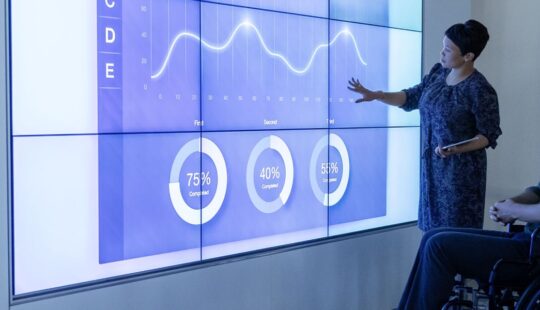In a world where innovation is happening at an unprecedented pace, businesses are finding themselves at a crossroads. They are presented with new opportunities to reimagine the way they work, collaborate, and invent. But businesses of all sizes, in every industry, are struggling under the weight of disjointed and disparate technology stacks that distract them from growth, resilience, and innovation.
That’s where clean core comes in. With a clean core strategy for your business technology – starting with your ERP – you can stay focused on what matters most to your business.
Operating with Greater Control and Agility at Your Core
Clean core is a concept designed to keep your organization’s core ERP systems transparent, flexible, consistent, and efficient. It provides the foundation for igniting innovation in the areas of your business that matter the most, allowing your systems to keep up with your business needs more easily, enable innovation, and even support a transition to the cloud.
Clean core has long been the primary goal of enterprise resource planning. After all, the point of having an ERP system is to keep your business running smoothly and adapt quickly to changing market conditions. Yet somewhere along the way, many businesses got lost – they adopted sprawling technology stacks with significant customizations and redundant integrations that negate the purpose of a modern, intelligent ERP system. Why? Too often, businesses believe they are so different that almost every process warrants a nonstandard approach.
In reality, most businesses have more in common than they realize. In terms of finance, accounting, HR, procurement, and many other core business processes, you’re probably very similar to your competitors and others in your industry. Clean core identifies those parts of the business that are standard and enables you to focus on your technology needs related to the nonstandard processes that set you apart from the rest.
Setting Your Business Apart with Strategic Differentiators
Take a luxury fashion brand and a fast-fashion retailer, for example. They both have the same core business goal – and related processes – of designing, manufacturing, and selling apparel and accessories. However, the luxury fashion brand likely focuses more on customer service and the procurement of high-quality materials, while the fast-fashion powerhouse probably places greater importance on rapid design and production cycles.
Despite their differences, both these businesses would benefit from using the same standard ERP and best practices designed for their industry. Doing so empowers them to focus on the strategic differentiators that make them unique, whether that’s creating custom solutions for the customer experience or innovating ways to cut costs.
So, what are SAP customers doing to differentiate themselves from the competition? Hitachi High Tech (HHT) replaced its highly customized, multinational business landscape with a move to the cloud, investing in SAP S/4HANA Cloud. With a two-tier public and private cloud model, using a side-by-side development approach on SAP Business Technology Platform (SAP BTP), HHT reduced 9,000 custom code developments to 472, allowing it to facilitate major upgrades every year and minor updates every six months. Moreover, it’s adopted a clean core mindset as part of the strategy going forward. By embracing the change, HHT moves from a legacy approach to a future-ready intelligent enterprise.
The Clean Core Journey: A Starting Point, Not an End
The industry is sending a clear message: cloud is the default, and it’s rapidly becoming the new normal. However, to truly future-proof their business, organizations should adopt a clean core strategy, a concept that is revolutionizing the way businesses innovate. For many businesses, upgrading to a cloud-based ERP system is the natural next step.
But there are steps you can take to get closer to a clean core and prepare yourself for the future, even before you are ready to make the jump to the cloud. To start, determine what parts of your ERP drive value. Create two categories: one for differentiating elements that deliver value to your business and another for basic functions that don’t create value but keep your business running. By determining which parts of your business set you apart – and whether they’re locked behind fragile integrations and custom code – you can begin thinking more strategically about whether your core ERP system is helping you achieve your goals. You can build on this foundation, enriching your systems to incorporate your competitive differentiators and create a business platform that sets you apart in the marketplace.
The future belongs to those that embrace the clean core and leverage it as a launchpad for innovation and growth. The time to embark on this transformative journey is now.
Claudio Muruzabal is chief business officer at SAP.



